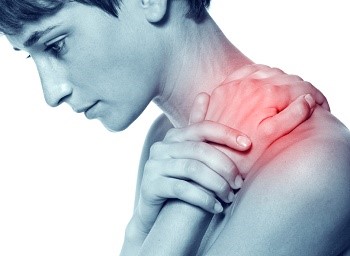Medical Malpractice and Reflex Sympathetic Dystrophy
Reflex sympathetic dystrophy, resulting from medical malpractice, may cause extreme pain and suffering. Day-to-day life may become a struggle.
 Reflex sympathetic dystrophy (RSD) is a condition that may result from an accident, surgery, or at times, medical malpractice. RSD is also called Complex Regional Pain Syndrome or CRPS. It is a condition when a particular part of the body experiences continuous pain, contusions, and temperature and physical changes. Although RSD may affect any body part, it has the tendency to affect the hands, feet, arms, knees, and shoulders. If you have recently been diagnosed with RSD, you may have many questions in addition to the physical and financial challenges ahead.
Reflex sympathetic dystrophy (RSD) is a condition that may result from an accident, surgery, or at times, medical malpractice. RSD is also called Complex Regional Pain Syndrome or CRPS. It is a condition when a particular part of the body experiences continuous pain, contusions, and temperature and physical changes. Although RSD may affect any body part, it has the tendency to affect the hands, feet, arms, knees, and shoulders. If you have recently been diagnosed with RSD, you may have many questions in addition to the physical and financial challenges ahead.
Causes of RSD
RSD may result from accidents or surgical procedures; however, it may also be caused by medical malpractice. Although the initial injury associated with RSD may seem insignificant, the pain may be disproportionate to the injury. RSD seems to be linked to the interaction between the immune system and specific body systems. These systems include the motor, sensory, and nervous systems. The control of the central nervous system on these processes tends to be affected by the condition.
Although the cause of RSD remains unidentified, it normally occurs when injuries do not heal properly. People involved in automobile or work-related accidents may experience RSD after a few months. Aside from major injuries, RSD may also develop due to minor injuries or extended periods of immobilization. Individuals who have gone through surgeries may experience the condition. St. Louis medical malpractice attorneys have come across several cases where the health care provider’s negligence has caused this condition in the patient.
Symptoms of RSD
Symptoms of RSD include the following:
- Extreme and continuous pain experienced in at least one extremity.
- Dry or flaking skin since RSD is linked to numerous skin ailments.
- Hair starts to become rough and delicate.
- Nails become fragile.
- Swelling or edema is experienced in sensitive areas of the body.
- Movement issues due to pain. Inflexible joints, shaking, and spontaneous movements may also be observed.
- Acute and debilitating muscle cramps.
- X-rays indicate deterioration of the bone while a bone scan shows extreme changes in the absorption of radioactive substances following an intravenous injection.
Stages of RSD
Although slight RSD cases may persist for a few weeks, pain in most cases can last for a number of years or an indefinite period of time. The three stages of RSD are as follows:
- Acute: RSD is experienced in the first three months and involves a burning sensation, puffiness, sensitivity, painful joints, and temperature and color changes.
- Dystrophic: RSD is experienced from the third to the sixth month and involves continuous pain and puffiness. The distressed limb appears bluish and feels cold. Muscles become stiff and may start to degenerate. Osteoporosis may also occur.
- Atrophic: RSD is experienced after six months and is characterized by cold and shiny skin. Muscles start to become stiff and weaken. The symptoms at this stage may spread to other limbs.
Treatment of RSD
The symptoms of RSD may be alleviated through the following treatments:
- Physical therapy
- Spinal cord stimulation
- Prescription medication
- Psychotherapy
- Nerve block
Whenever a person experiences RSD following an automobile accident, medical negligence, or medical malpractice, the person may wish to seek compensation from the party responsible for the condition. Consult with Zevan and Davidson Law Firm at (314) 588-7200.
[maxbutton id=”1″]
Missouri Medical Malpractice Lawyer
If you have suffered as a result of medical malpractice, contact our legal team right away. Waiting to seek legal representation can prevent you from filing a claim and receiving the compensation you deserve.
Contact Zevan Murphy today.
